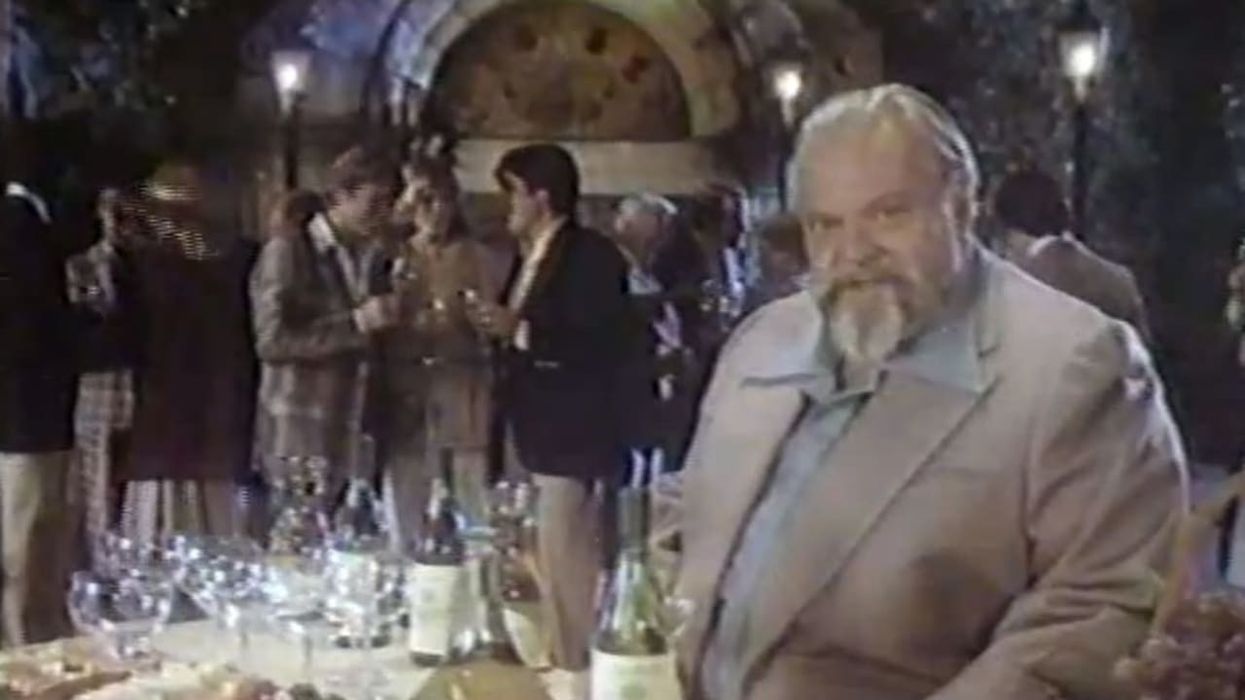The Man Who Helped a Hammered Orson Welles Get Through a Commercial Tells All
Life on set can be a little crazy. Especially when a famous actor and director is hammered.

In the late 1970s, Orson Welles decided to make a little extra money and do a series of national television spots for Paul Masson wines. These commercials were supposed to reflect the opulence of a famous director enjoying them in fancy spots.
When the spots worked... they were good! Orson was charismatic, and the product looked great.
But what made these commercials much more famous was the secret B-roll. It was passed around on VHS tapes and sheltered from prying eyes. It showed Welles, absolutely shitfaced. He could barely get through his lines and was hardly present in the commercials.
Before you ask, yes, they eventually made it to YouTube and went public.
But what was the story behind these outtakes and commercials? Behind the scenes, Peter Shillingford, the clapperboard operator, was there with Welles. And now he's ready to tell the tale. He sat down with Mel Magazine to explain.
He explains that Welles was a lot of fun to be around, even if hammered. Their biggest hurdles were handling the advertising agency and keeping Orson separated from them. But other than that, Shillingford had fun with Welles.
"He would take the piss out of me and make parodies of my name and have fun with my accent—he was a bundle of laughs," he said. "I’d stay with him at lunchtime too. I’ve read that he’d demand these huge meals, but he never ate lunch on the shoots I did with him. I’d sit with him and have a snack and he’d tell stories of old Hollywood and they were outrageous. Those were magic times."
Shillingford's account reads like an epic adventure for the young crew member. For the drunk outtakes, Orson had been up all night shooting and drinking on another project. When he arrived to set he laid on the floor and tried to nap, but there was no time. They helped him onto the piano stool, and then he had to perform.
As Shillingford described it, "After I came in with the clapper on the first take and the director yelled, 'Action please,' Orson had no idea he was supposed to begin. The director said, 'Action' again, and Orson mumbled, 'He doesn’t do anything?' indicating the actor at the table with him. On the second take, Orson began with an 'Ah!' and then went on about the French champagne as the actors with him tried not to crack up as his words slurred. Finally, on the third take, Orson let out this sort of chuckle at the beginning. He went on to say most of the dialogue right, but he was so obviously pissed that we couldn’t use it."
This led to one of the most popular clips of the actor of all time, and also a great story for Shillingford to tell forever. Was it professional? Probably not. But sometimes it's worth it to hear those stories from a legend and to have something you'll never forget.
Let us know what you think in the comments!
Source: Mel Magazine











